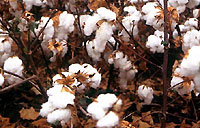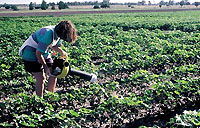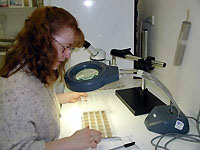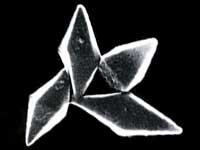| Entomology Home |

an overview
of biological control research in CSIRO Entomology
| Biological Control Home | ||
|
|
||
| Aquatic Weeds » | ||
|
|
||
|
|
||
| Biopesticides | ||
| Entomology Home | ||
| Biological Control Home > Biopesticides > Bacteria |
Managing the biopesticide when it is inserted in the plant
The bacterium Bacillus thuringiensis (Bt) occurs naturally in soil. Insecticidal strains, discovered in 1911, have been used for pest control since the 1950s. Helicoverpa moths are the main pests of cotton and, in the 1990s, INGARD ® cottons containing a Bt protein toxic to them were released, resulting in a substantial reduction in insecticide use where they are grown. From season 2003/04, Australian growers will be able to plant BOLLGARD II®, containing two Bt proteins. INGARD ® plantings have led to a substantial reduction in the use of insecticides on cotton but research doesn't end with the commercial release of the GM cottons. Much effort goes on in the field and the lab in the battle to prevent Helicoverpa developing resistance and on assessing how effective these cotton varieties are across seasons and in different conditions. And the search for additional toxic proteins continues. For INGARD ®, refuge crops are grown to provide a source of susceptible moths to mate with Bt survivors, thereby diluting any resistance genes. In BOLLGARD II®, it is hoped that the presence of two toxic proteins which act differently will considerably slow the development of any resistance.
|




